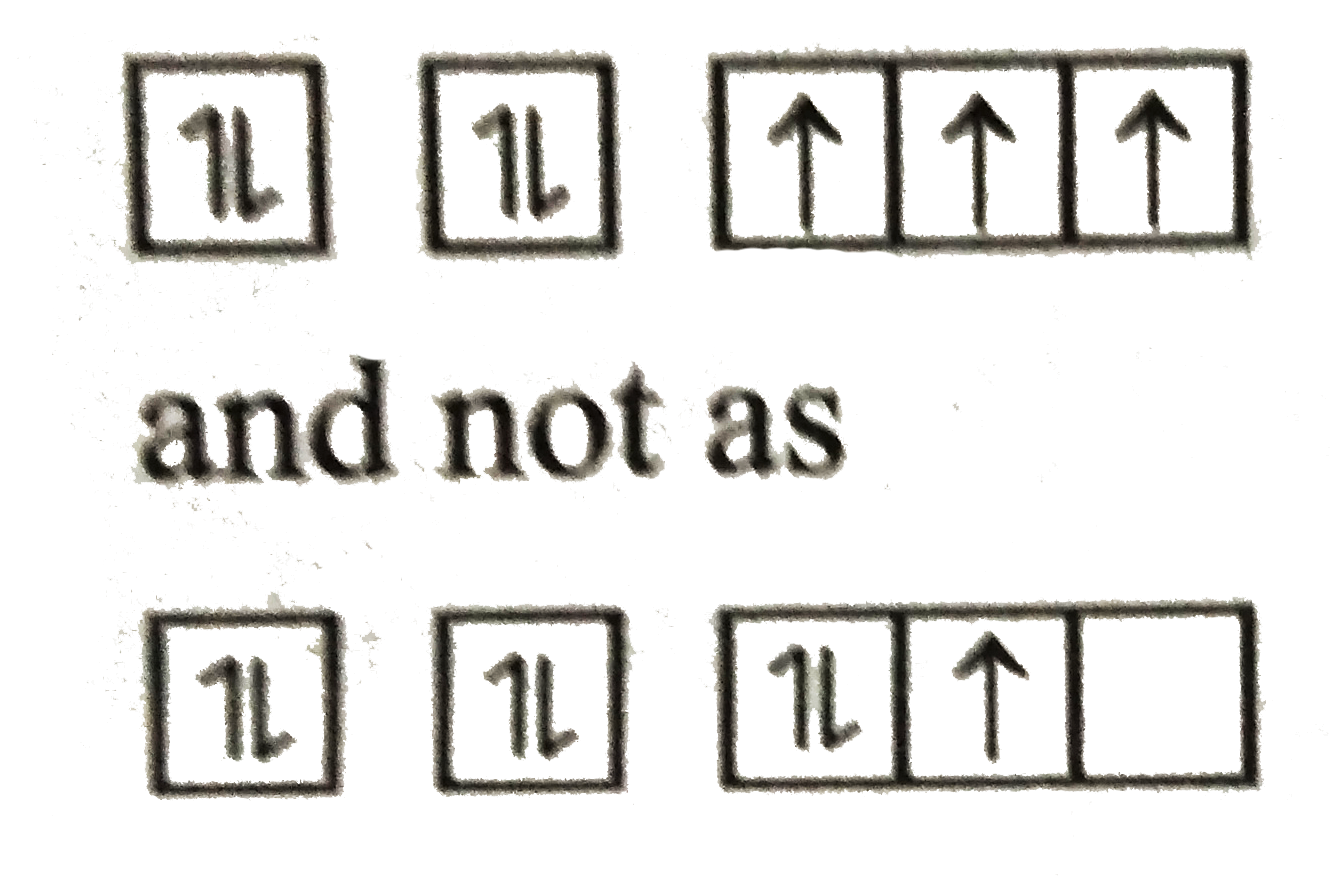Complete Solutions to Exercise - 03 of chapter ATOMIC STRUCTURE of Class 11 book with complete answers and questions
| Class 11 | CHEMISTRY |
| Chapter | ATOMIC STRUCTURE |
| ALLEN | Exercise - 03 |
| Number Of Questions | 21 |
| Academic Year | 2023-24 |
MATCH THE COLUMN
`{:(,"Column-I",,"Column-II",),((A),"Aufbau principal",(p),"Line spectrum in visible region",),((B),"de broglie",(q),"Orientation of an electron in an orbital",),((C),"Angular momentum",(r ),"Photon",),((D),"Hund's rule",(s),lambda = h//mv,),((E),"Balmer series",(t),"Electron configuration",),((F),"Planck's law",(u),mvr,):}`
View Solution`{:(,"Column-I",,"Column-II",),((A),"Cathode rays",(p),"Helium nuclei",),((B),"dumb-bell",(q),"Uncertainty principle",),((C),"Alpha particles",(r),"Electromagnetic radiation" ,),((D),"Moseley",(s),"p-orbital",),((E),"Heisenberg",(t),"Atomic number",),((F),"X-ray",(u),"electrons",):}`
View SolutionFrequancy `=f_(1)`, Time period = T, Energy of `n^(th)` orbit `= E_(n)`, radius of `n^(th)` orbit `=r^(n)`, Atomic number = Z, Orbit number = n :
`{:(,"Column-I",,"Column-II",),((A),f,(p),n^(3),),((B),T,(q),Z^(2),),((E),E_(n),(r ),(1)/(n^(2)),),((D),(1)/(r_(n)),(s),Z,):}`
View SolutionStatement-I : Nodal plane of `p_(x)` atmoic orbital is yz plane.
Because
Statement-II : In `p_(x)` atmoic orbital electron density is zero in the yz plane.
View SolutionStatement-I : No two electrons in an atom can have the same values of four quantum number.
Because
Statement-II : No two electrons in an atom can be simultaneously in the same shell, same subshell, same orbitals and have same spin.
View SolutionAssertion (A) : p orbital is dumb- bell shaped
Reason (R ) :Electron presents in p orbital can have any one of three value of magnetic quantum number i.e. `0,+1, or - 1`
View SolutionStatement-I : The ground state configuration of Cr is `3d^(5) 4s^(1)`.
Because
Statement-II : A set of exactly half filled orbitals containing parallel spin arrangement provide extra stability.
View SolutionStatement-I : Mass numbers of most of the elements are fractional.
Because
Statemen-II Mass numbers are obtained by comparing with the mass number of carbon taken as 12.
View SolutionAssertion (A) : Limiting line is the balmer series has a wavelength of `364.4 nm`
Reason (R ) : Limiting line is obtained for a jump electron from `n = infty`
View SolutionAssertion (A) : The electronic configuration of nitrogen atom is represented as

Reason (R ) : The electronic configuration of the ground state of an atom is the one which has the greatest multiplicity
View SolutionAssertion:The configuration of boron atom cannot be `1s^2 2s^3`
Reason :Hund's rule demands that the configuration should display maximum multiplicity
View SolutionStatement-I : 2p orbitals do not have spherical nodes.
Because
Statement-II : The number of spherical nodes in p-orbitals is given by `(n-2)`
View SolutionStatement-I : In Rutherford's gold foil experiment, very few `alpha`-particles are deflected back.
Because
Statement-II : Nucleus present inside the atom is heavy.
View SolutionStatement-I : Each electron in an atom has two spin quantum numbers.
Because
Statement-II : Spin quantum numbers are obtained by solving Schrodinger wave equation.
View SolutionStatement-I : There are two spherical nodes in 3s-orbital.
Because
Statement-II : There is no angular node in 3s-orbital.
View SolutionComprehension # 1
Read the following rules and answer the questions at the end of it.
Electrons in various suborbits of an filled in increasing order to their energies.
Pairing of electrons in various orbitals of a suborbit takes places only after each orbital is half-filled.
No two electrons in an atom can have the same set of quantum number.
`C (Z=24),Mn^(+)(Z=25), Fe^(2+)(Z=26)` and `Co^(3+) (Z=27)` are isoelectronic each having 24 electrons. Thus,
View SolutionComprehension # 1
Read the following rules and answer the questions at the end of it.
Electrons in various suborbits of an filled in increasing order to their energies.
Pairing of electrons in various orbitals of a suborbit takes places only after each orbital is half-filled.
No two electrons in an atom can have the same set of quantum number.
A compound of vanadium has a magnetic moment of `1.73 BM`. Electronic configuration of the vanadium ion in the compound is :
View SolutionComprehension # 1
Read the following rules and answer the questions at the end of it.
Electrons in various suborbits of an filled in increasing order to their energies.
Pairing of electrons in various orbitals of a suborbit takes places only after each orbital is half-filled.
No two electrons in an atom can have the same set of quantum number.
Which of these ions are expected to be paramagnetic and coloured in aqueous solution ?
View SolutionComprehension # 1
Read the following rules and answer the questions at the end of it.
Electrons in various suborbits of an filled in increasing order to their energies.
Pairing of electrons in various orbitals of a suborbit takes places only after each orbital is half-filled.
No two electrons in an atom can have the same set of quantum number.
While writing the following electronic configuration of Fe some rules have been violated :
I : Aufbau's rule,
II : Hund's rule
III : Pauli's exclusion principle
_E01_117_Q01.png)
View SolutionComprehension # 1
Read the following rules and answer the questions at the end of it.
Electrons in various suborbits of an filled in increasing order to their energies.
Pairing of electrons in various orbitals of a suborbit takes places only after each orbital is half-filled.
No two electrons in an atom can have the same set of quantum number.
How many elements would be in the second period of the periodic table if the spin quantum number `(m_(s))` could have the value of -(1)/(2),0,+(1)/(2)`?
View SolutionComprehension # 1
Read the following rules and answer the questions at the end of it.
Electrons in various suborbits of an filled in increasing order to their energies.
Pairing of electrons in various orbitals of a suborbit takes places only after each orbital is half-filled.
No two electrons in an atom can have the same set of quantum number.
The sub-shell that arises after f sub-shell is called g sub-shell.
View Solution
Exercise - 03 questions and complete solutions for chapter ATOMIC STRUCTURE of ALLEN of Class 11